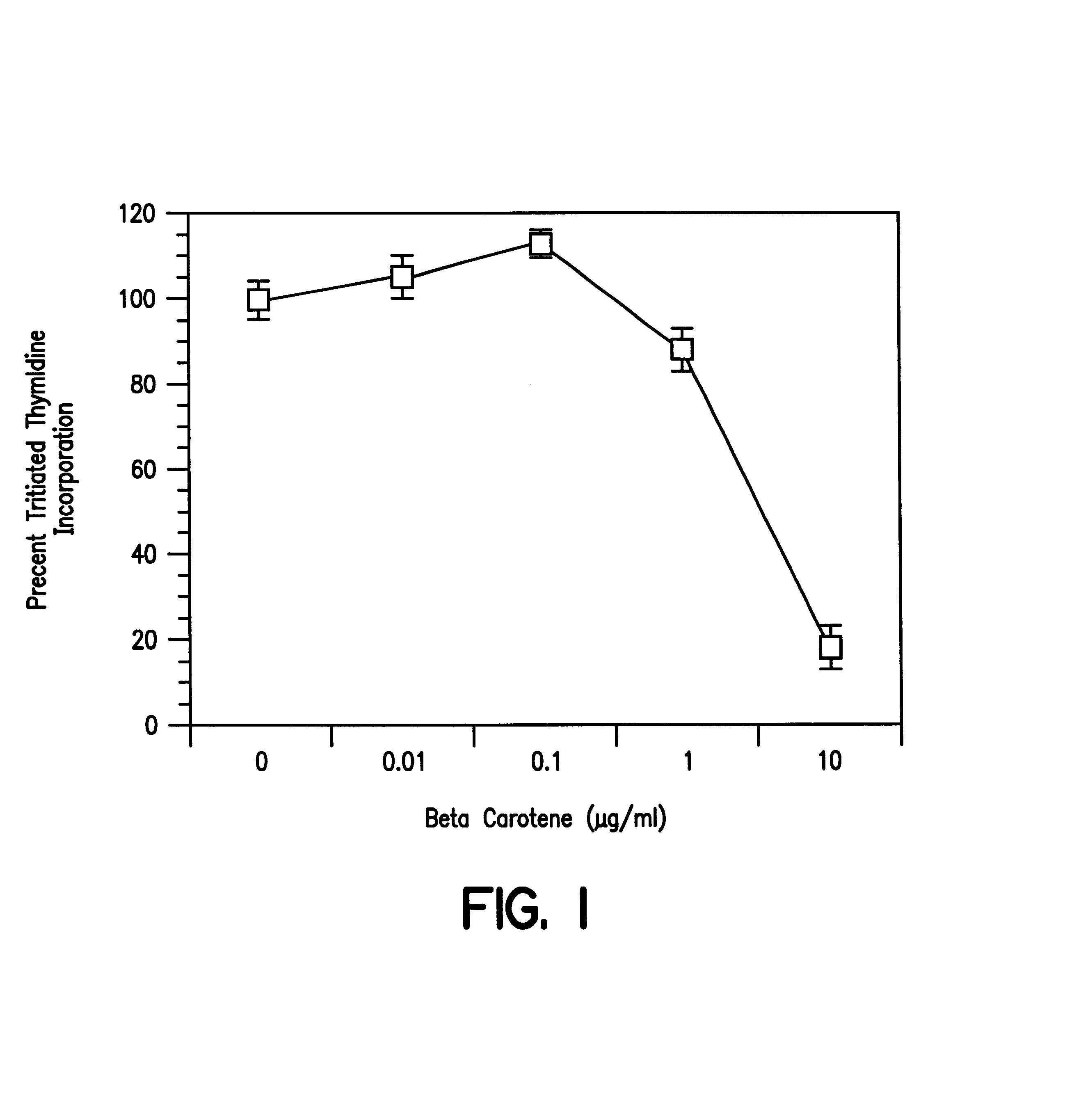Carotenoid agent for inhibiting the conversion of epithelial cells to tumors
a carotenoids and epithelial cell technology, applied in the field of melanocytes and melanomas, can solve the problems of rapid blistering of the skin, difficult removal and treatment, and no studies have demonstrated the possible inhibiting effect of carotenoids in the conversion of melanocytes to melanomas
- Summary
- Abstract
- Description
- Claims
- Application Information
AI Technical Summary
Problems solved by technology
Method used
Image
Examples
Embodiment Construction
The following examples demonstrate the effectiveness of carotenoid compositions in the treatment of melanocytes and the relative non-toxicity of those compositions.
The examples that follow will now be described with reference to the accompanying drawings, in which:
BRIEF DESCRIPTIONS OF THE DRAWINGS
FIG. 1 is a graph showing the effect of beta-carotene on DNA synthesis in normal human melanocytes. In summary, while DNA synthesis was largely inhibited at the highest beta-carotene dose, the lower doses had little or no effect. The 10 .mu.g / ml dose was chosen as the pre-treatment dose for the UV experiments as it offered the highest beta-carotene concentration achievable with minimal effect on DNA synthesis. Beta-carotene was incubated with the melanocytes for 24 hours. Each data point is the mean of 6 wells+ / -% std. error as compared to control.
FIG. 2 is a graph showing the viability of normal human melanocytes following UV-B irradiation with and without beta-carotene. In summary, immed...
PUM
| Property | Measurement | Unit |
|---|---|---|
| concentration | aaaaa | aaaaa |
| wavelength | aaaaa | aaaaa |
| wavelength | aaaaa | aaaaa |
Abstract
Description
Claims
Application Information
 Login to View More
Login to View More - R&D
- Intellectual Property
- Life Sciences
- Materials
- Tech Scout
- Unparalleled Data Quality
- Higher Quality Content
- 60% Fewer Hallucinations
Browse by: Latest US Patents, China's latest patents, Technical Efficacy Thesaurus, Application Domain, Technology Topic, Popular Technical Reports.
© 2025 PatSnap. All rights reserved.Legal|Privacy policy|Modern Slavery Act Transparency Statement|Sitemap|About US| Contact US: help@patsnap.com



